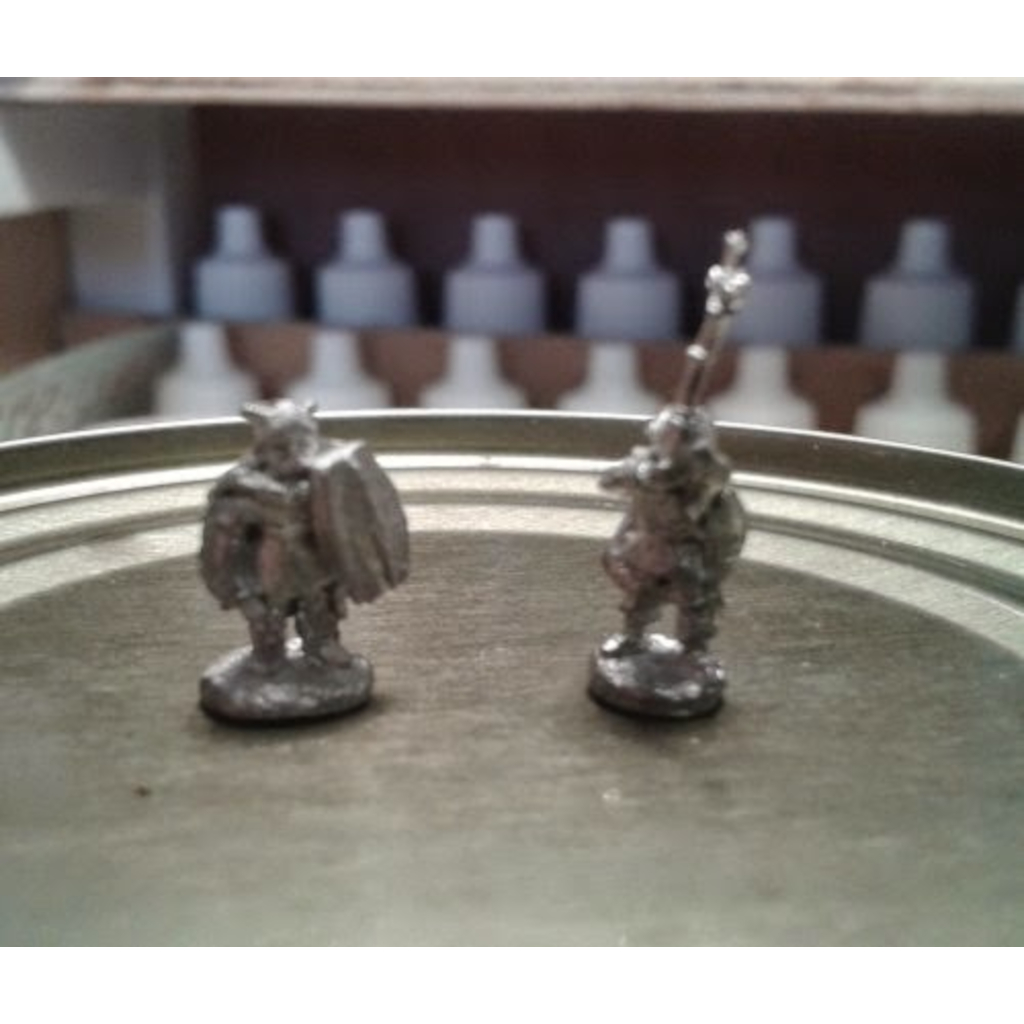Here is my guide for Painting A 10mm Miniature an easy guide to follow. Check out my other guides Preparing A Miniature, Painting Horses, Wargaming Materials and Wargaming Tools.
Painting A 10mm Miniature
Paints


Okay so we’ve now prepared the miniature ready for painting, your next choice is paints I used to use Humbrol enamels but have since swapped over to Vallejo acrylic paint. Which ever paints you decide to use get yourself a good selection of basic colours, but don’t worry about buying a whole range you can always mix your colours to achieve the colours you want. To be honest I think paint choice is probably more of what’s available locally as I don’t think there’s a lot to choose between any of the major paint Manufacturer’s.
Paintbrushes




Alright then, on to brushes there’s a lot of choice out there but like keep it simple and I still use Humbrol paintbrushes. You’ll be doing most of your painting with Evoco paintbrush size 2, Evoco paintbrush size 6 for putting on washers and varnishing, and a Palpo paintbrush size 2 for detail work. And you’ll need some think larger for drybrushing (you can buy a cheaper synthetic brush for this as drybrushing is hard on the bristles).
Other things you will find useful are a palette to mix your paints on. Some kind of little pot to keep your water in. Something to keep your paintbrushes in. Some toilet paper or kitchen roll to wipe any excess paint away. Probably the most important thing is to find somewhere with good lighting.
Time to Paint
Once your undercoat is thoroughly dry, you’re ready to start painting. The first thing you need to do is carefully apply your basic colours onto the miniature. Detail work like belts and swords can be left until last. If I can give you one really important tip, then it is this thin your colours, a brush load of water to every brush load of paint is about right. If the paint is thinned it will flow off your brush far easier and with much more control, several thin layers of paint are far better than one thick layer.
Shading
The next step after the base colours is to apply a wash. I use Games Workshop Sepia to wash the entire miniature, but you can also get more specific, and use the red for reds the green for greens, the blues for blues etc. Experiment a little, washes are a fantastic and extremely effective way to get the dark shadows in your miniature. You might even prefer to stop here because the miniature can look perfectly fine after having base colours and a wash applied.
Highlights
The highlight stage really brings a miniature to life. This is when you paint in the parts of your miniature where, in the real world, light would catch the upper folds of a cloak, or the sleeve on a jacket, or the top of a hat. Of course our little miniatures are too small to have these natural highlights, so we have to exaggerate them to give the miniature the impression of realism.
To highlight your miniature just use your original base coat colours and mix a little bit of white paint then apply to your miniature.
Another technique you can try is dry brushing for highlighting, and it’s particularly useful when highlighting hair or fur. Get the highlight colour on your paintbrush (use a cheaper synthetic brush) and wipe most of the paint off on a toilet paper or kitchen roll. Then lightly wipe the side of the bristles over your surface repeatedly, leaving just a tiny bit of paint on the raised highlights each time. You will be able to quickly build up a highlight without affecting the recessed areas.
Details
Okay you almost finished, it’s now time to go over your miniature and clean up all those little details you missed. And paint any details that need doing.
Varnishing
You’re not quite finished yet. You now have to varnish your miniature. Again, this is a matter of preference, there are both gloss and matt sprays available which give different effects. However I use Humbrol matt or gloss depending on what I’m doing.
Basing
Okay the last stage is to base your miniature. I use laser cut bases which can be bought from various manufacturers. I glue my miniatures on using superglue, once the superglue has dried I cover the entire base with PVA, then dip the base in premixed tub of basing material. Consisting of Javis No 32 dark brown mixed with Jarvis extra fine Cork. The last stage is to dab PVA glue on odd spots of the base then dip in tub of Noch Summer Meadow Grass.
Tools
- Humbrol Evoco paintbrush size 2
- Humbrol Evoco paintbrush size 6
- Humbrol Palpo paintbrush size 2
- Synthetic paintbrush
Materials
- Vallejo acrylic paint
- Palette
- Water pot
- Toilet paper or kitchen roll
- Games Workshop Sepia
- Humbrol gloss
- Humbrol matt
- Laser cut bases
- Superglue
- Javis Countryside Scenic Products Scatter No 32 Dark Brown
- Javis Countryside Scenic Products Scatter Extra Fine Cork
- Noch Summer Meadow Grass
Sources
Other blog categories that may be of interest. 10mm ACW Project, 10mm AWI Project, 10mm AZW Project, 10mm CGW Project, 10mm FIW Project, 10mm Sci-Fi Projects, Aliens, Dropzone Commander, Terra Nova, 10mm WWI Project, 10mm WWII Project, 10mm Zombie Project, Battle Reports & Scenarios, Making Scenery & Terrain, Painting Guides, Shows & Events, Solo Wargaming, Wargaming Projects, Wargaming Rules.


Leave a Reply